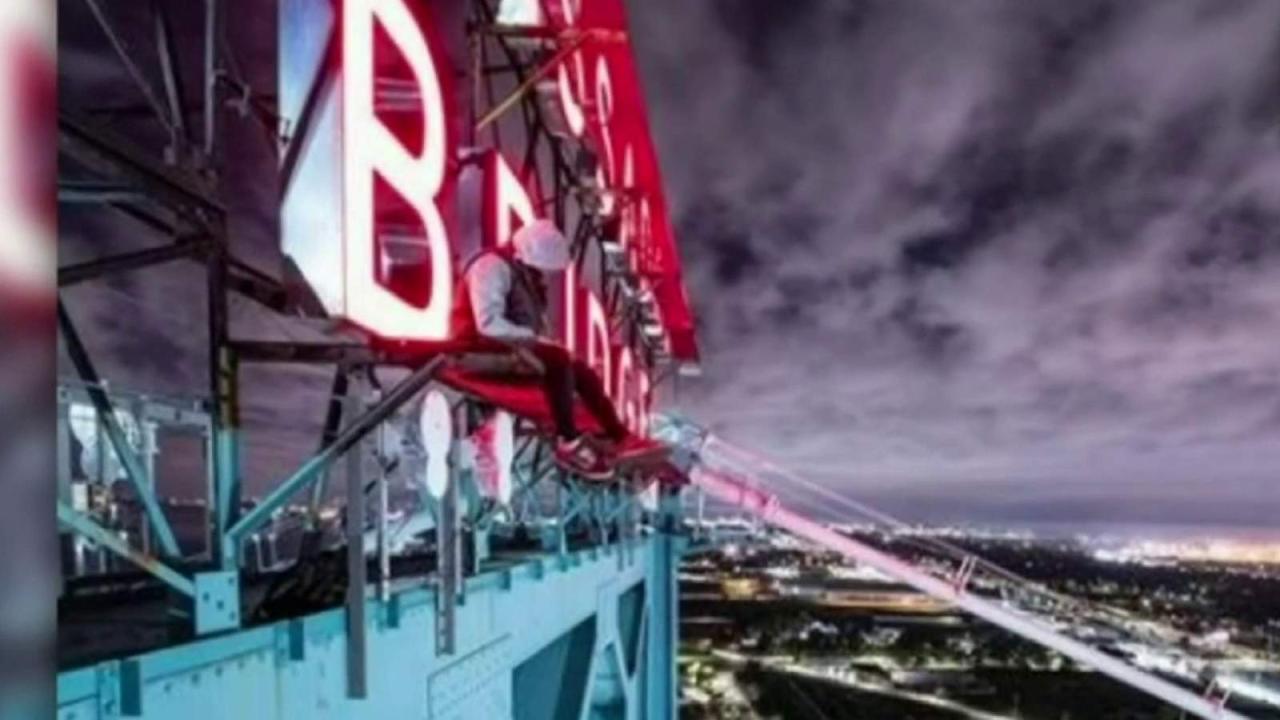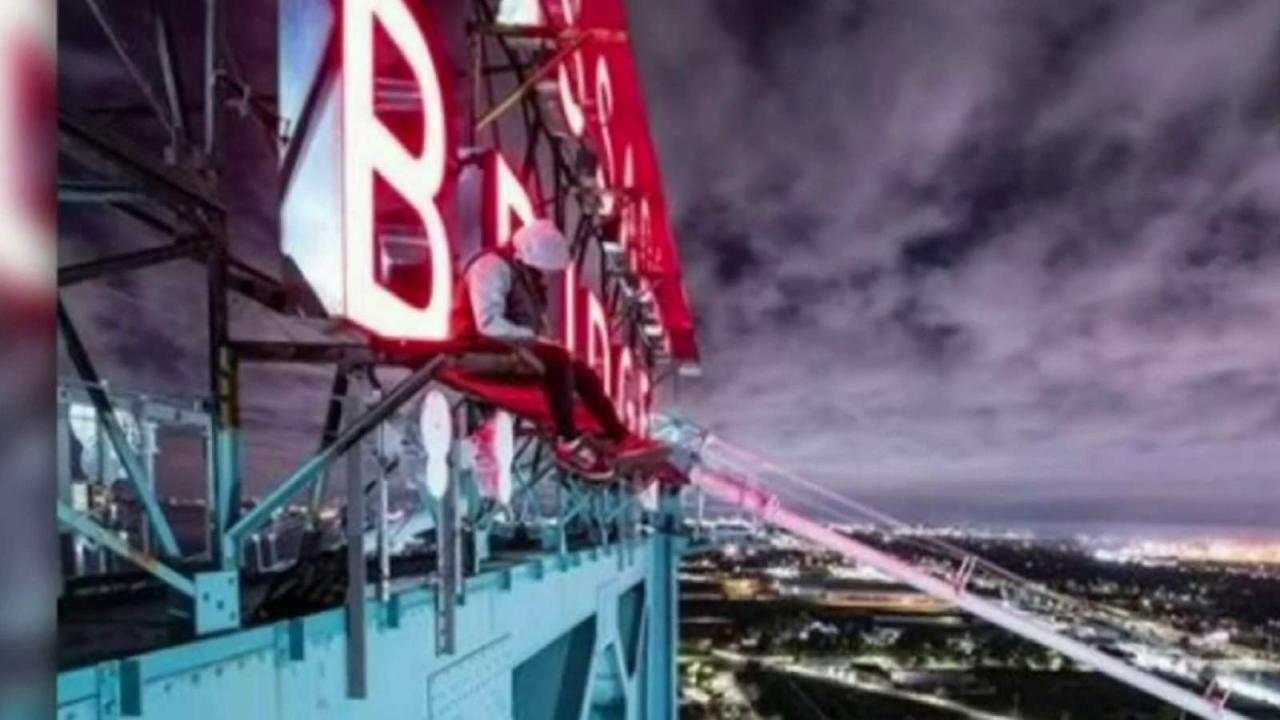Ambassador Bridge camera photography offers a unique challenge and reward. This guide explores optimal techniques for capturing the bridge’s architectural grandeur and historical significance from various perspectives. We analyze the impact of lighting, weather, and composition on the final image, providing a comprehensive approach to achieving compelling photographic representations. The technical aspects, including camera settings, lens selection, and post-processing techniques, are detailed to ensure sharp, high-quality images.
The guide covers diverse photographic styles, from minimalist to dramatic, illustrating how to incorporate surrounding elements to create visually rich compositions. Understanding the bridge’s historical context and scale allows for more meaningful and impactful photographs. A detailed analysis of various vantage points, both from the United States and Canadian sides, provides practical guidance for photographers of all skill levels.
Ambassador Bridge Views & Perspectives

The Ambassador Bridge, a majestic suspension bridge connecting Detroit, Michigan, and Windsor, Ontario, offers a diverse range of photographic opportunities. The optimal vantage point and resulting aesthetic are significantly influenced by factors such as time of day, weather conditions, and the geographical location of the photographer. This analysis explores the various perspectives available, highlighting the unique characteristics of each.
Optimal Vantage Points and Time of Day
Selecting the ideal location to photograph the Ambassador Bridge requires careful consideration of the interplay between light and the bridge’s structure. The bridge’s imposing size and intricate details demand a thoughtful approach to composition and lighting. Early morning and late afternoon provide the most dramatic lighting, with the low sun casting long shadows and creating a warm, golden hue.
Midday, while offering bright, even illumination, can lead to harsh shadows and less visually interesting photographs. Overcast days, however, can provide soft, diffused light that is ideal for capturing the bridge’s architectural details without harsh contrasts. Night photography presents another unique opportunity, showcasing the bridge’s illuminated structure against the dark cityscape. A clear night offers excellent visibility of the bridge’s lights and their reflection on the water.
Architectural Detail Locations
Several locations offer exceptional opportunities to capture the bridge’s architectural details. The Detroit RiverWalk provides a close-up perspective, allowing for detailed shots of the bridge’s cables, towers, and suspension system. From the Windsor waterfront, the bridge’s entire span can be captured, showcasing its scale and grandeur. Elevated viewpoints, such as the observation decks in certain buildings on either side of the river, offer unique perspectives, emphasizing the bridge’s height and its relationship to the surrounding urban landscape.
The differing perspectives from the riverbanks allow for varied compositional approaches, ranging from close-up studies of specific architectural elements to sweeping panoramic shots of the entire structure.
Aesthetic Differences: Canadian vs. US Perspectives
Photographs taken from the Canadian and US sides of the bridge offer distinct aesthetic differences. From the Canadian side, the Detroit skyline forms a compelling backdrop, creating a dynamic composition that highlights the bridge’s connection between two cities. The perspective often emphasizes the bridge’s graceful curves and its integration into the urban landscape. In contrast, photographs from the US side frequently feature the Windsor skyline, providing a different visual context and emphasizing the bridge’s imposing scale against a more industrial backdrop.
The choice of vantage point significantly influences the overall mood and message conveyed by the photograph.
Photography Itinerary: Capturing Changing Light
A comprehensive photography itinerary should encompass various times of day to capture the bridge’s dynamic appearance under different lighting conditions. An early morning session (6:00 AM – 8:00 AM) could focus on capturing the soft, warm light of sunrise and the bridge’s silhouette against the rising sun. A midday shoot (12:00 PM – 2:00 PM) would allow for capturing the bridge’s details under bright, even light, although careful attention to shadows would be necessary.
Finally, a late afternoon/sunset session (6:00 PM – 8:00 PM) would provide the opportunity to capture the warm, golden light of the setting sun, creating dramatic shadows and a rich color palette. This itinerary allows for a diverse collection of photographs, showcasing the bridge’s versatility under various lighting conditions.
Array
The Ambassador Bridge, spanning the Detroit River between Detroit, Michigan, and Windsor, Ontario, holds significant historical and engineering importance. Its construction, completed in 1929, marked a pivotal moment in transcontinental transportation and solidified the close relationship between the United States and Canada. Photographic representations can effectively communicate this historical context and the bridge’s enduring legacy.The bridge’s scale and grandeur can be effectively showcased through various photographic techniques.
Wide-angle shots, taken from a distance, emphasize the bridge’s length and its impressive connection across the river. Conversely, close-up shots of specific architectural details, such as the suspension cables or the bridge’s towers, highlight the intricate engineering involved in its construction. Aerial perspectives offer a unique vantage point, allowing for a comprehensive view of the bridge’s entire structure and its relationship to the surrounding urban landscapes.Human activity significantly impacts the visual representation of the Ambassador Bridge.
The constant flow of traffic across the bridge’s roadways creates dynamic lines and patterns that can be captured to convey a sense of movement and energy. The presence of ships navigating the Detroit River below the bridge adds another layer of visual complexity, showcasing the bridge’s role within a larger transportation network. These elements, when incorporated thoughtfully into photographs, provide a more complete and nuanced depiction of the bridge’s function and significance within its environment.
Comparative Analysis of Photographic Representations of the Ambassador Bridge, Ambassador bridge camera
The following table compares and contrasts different photographic approaches to depicting the Ambassador Bridge:
| Photographic Type | Perspective & Focus | Strengths | Limitations |
|---|---|---|---|
| Landscape | Broad view, encompassing the bridge and surrounding environment (river, cityscapes). | Provides context, showcases the bridge’s scale within its environment, captures atmospheric conditions. | Bridge details may be less prominent; requires ideal weather conditions. |
| Architectural | Detailed shots focusing on the bridge’s structural elements (towers, cables, roadway). | Highlights engineering details, showcases the bridge’s aesthetic qualities, can be used to demonstrate construction techniques. | May lack overall context; requires appropriate lighting for detail capture. |
| Documentary | Focuses on human interaction with the bridge (traffic, border crossings, maintenance). | Illustrates the bridge’s function, captures the daily life surrounding it, provides a sense of scale through human activity. | May not highlight the bridge’s aesthetic qualities; requires careful composition to balance human activity with the bridge itself. |
| Aerial | Overhead perspective, offering a comprehensive view of the entire bridge structure. | Provides a unique perspective, showcases the bridge’s full length and connection between cities, allows for large-scale environmental context. | May lack detail in specific architectural features; weather conditions can impact image quality. |
Mastering Ambassador Bridge camera photography involves a multifaceted approach, integrating technical expertise with artistic vision. By understanding the interplay of lighting, composition, and historical context, photographers can create compelling images that capture the bridge’s unique character. This guide provides a foundational framework for achieving high-quality photographs, encouraging experimentation and individual artistic expression within the defined parameters of technical proficiency.
FAQ Summary: Ambassador Bridge Camera
What is the best time of day to photograph the Ambassador Bridge?
Golden hour (sunrise and sunset) provides the most aesthetically pleasing light, creating long shadows and warm tones. However, any time of day can produce interesting results depending on the desired effect.
What type of filter is recommended for bridge photography?
Polarizing filters can reduce glare and enhance color saturation, while neutral density (ND) filters allow for slower shutter speeds in bright conditions, useful for creating motion blur in water or traffic.
Are there any restrictions on photography near the Ambassador Bridge?
Check local regulations and be mindful of security concerns. Avoid areas restricted to authorized personnel.
What software is best for post-processing Ambassador Bridge photos?
Adobe Lightroom and Photoshop are industry standards offering comprehensive tools for image enhancement. Other options include Capture One and Luminar.
Real-time monitoring of border crossings, such as the Ambassador Bridge, utilizes sophisticated camera systems for traffic management and security. Similar technologies are employed in other urban areas for traffic flow optimization; for example, comprehensive coverage is provided by the ottawa traffic camera network. Analysis of data from these systems, including the Ambassador Bridge cameras, contributes to improved infrastructure planning and emergency response strategies.
Real-time monitoring of the Ambassador Bridge’s structural integrity often relies on fixed camera systems. However, for comprehensive inspections, particularly in hard-to-reach areas, unmanned aerial vehicles (UAVs) offer a superior solution. The high-resolution imagery provided by a system like the xp-4 drone could significantly enhance the data gathered by the bridge’s existing camera network, providing a more detailed assessment of potential issues.
This integration of UAV technology with fixed camera systems optimizes bridge maintenance strategies.
